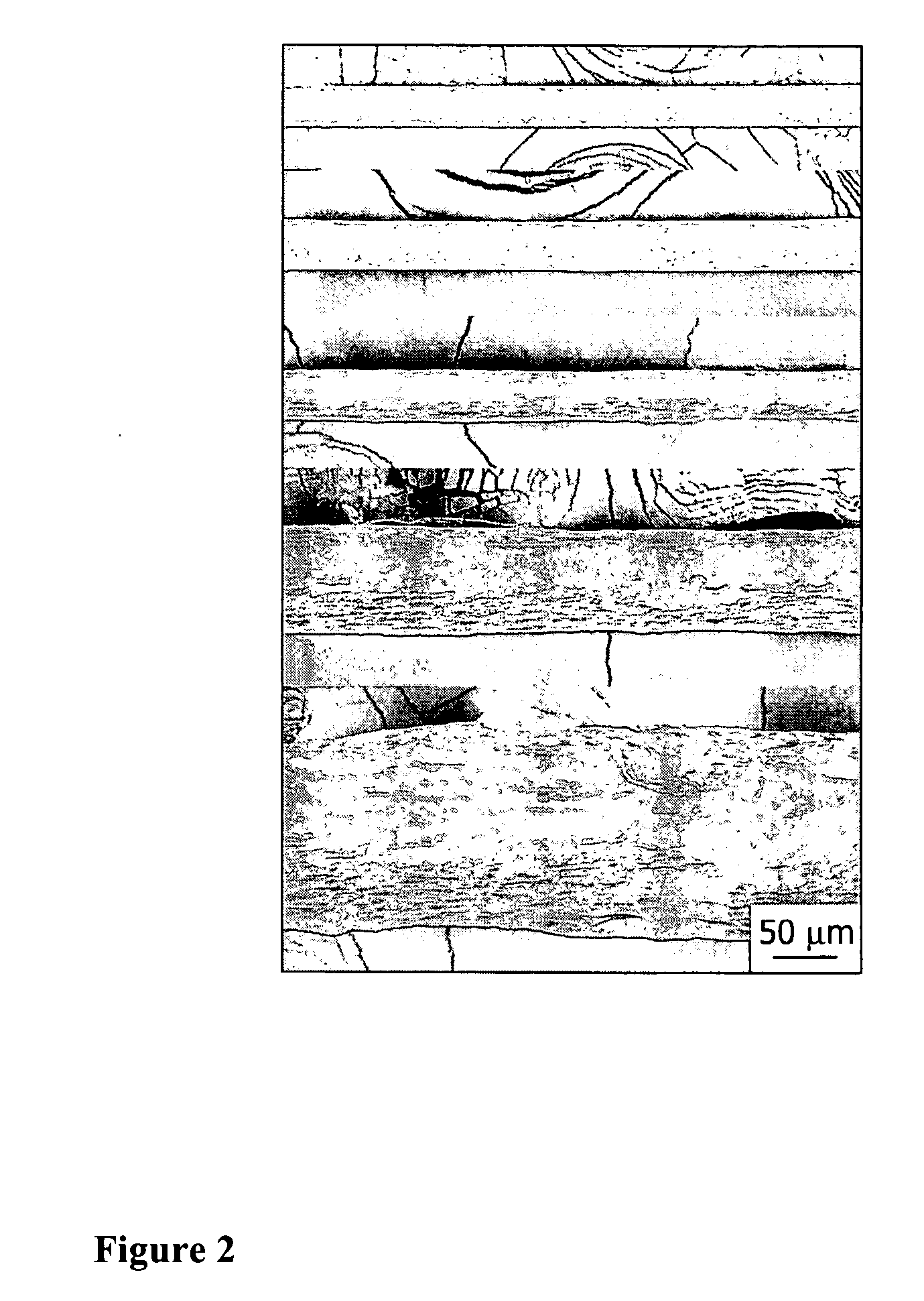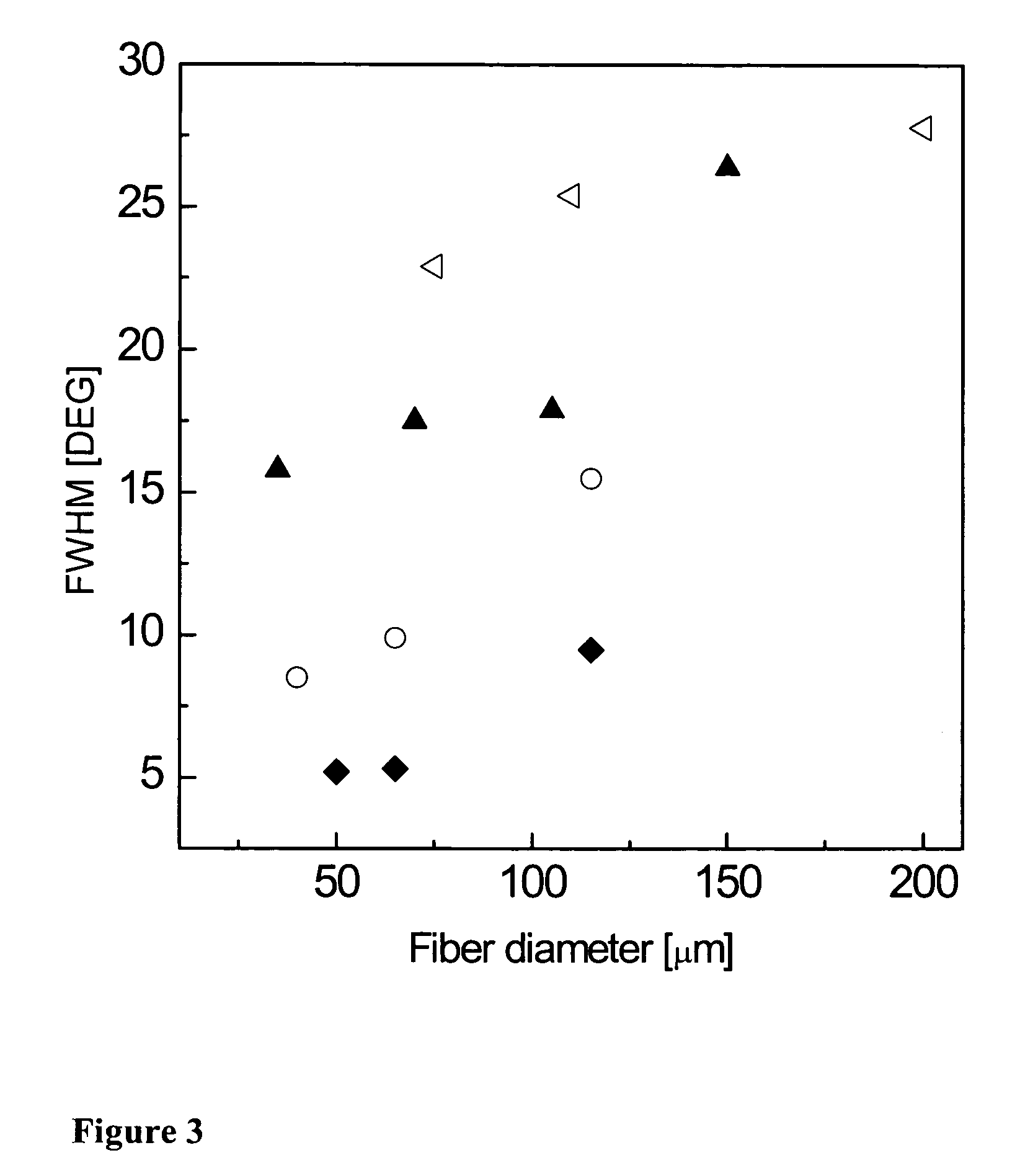Polymer-nanotube composites, fibers, and processes
a technology of polymer and nanotubes, applied in the field of composite materials processing, can solve the problems of difficult dispersion of swnt agglomerates, difficult dispersion of agglomerated nanotubes, and different methods used to prepare these composite materials, and achieve the effect of high thermal conductivity
- Summary
- Abstract
- Description
- Claims
- Application Information
AI Technical Summary
Benefits of technology
Problems solved by technology
Method used
Image
Examples
examples
[0037] SWNT nanotube polymer composites of both amorphous and semicrystalline matrix polymers were prepared. A twin-screw compounder was used for the fabrication of the composites, which enabled direct mixing of the SWNT with molten polymers, which provided a good distribution of the SWNT dispersed in the polymer. Melt spinning of composite fibers produced extraordinary alignment of the SWNTs as determined by polarized Raman spectroscopy. The mechanical properties (tensile modulus) of the fibers were also measured and compared to theoretical values.
[0038] Experimental Procedure
[0039] Matrix polymers for preparing pol / mer melts included polystyrene (PS, MW: ˜250,000 g / mol, supplied by Scientific Polymer Products) and polyethylene (PE, high density, supplied by Aldrich). Single walled carbon nanotubes (SWNT) for the PS composites were synthesized by the high-pressure carbon monoxide method (HiPco) and used unpurified. (Rice University: Nikolaev, P., et al., Chem. Phys. Lett. (1999),...
PUM
| Property | Measurement | Unit |
|---|---|---|
| concentration | aaaaa | aaaaa |
| concentration | aaaaa | aaaaa |
| concentration | aaaaa | aaaaa |
Abstract
Description
Claims
Application Information
 Login to View More
Login to View More - R&D
- Intellectual Property
- Life Sciences
- Materials
- Tech Scout
- Unparalleled Data Quality
- Higher Quality Content
- 60% Fewer Hallucinations
Browse by: Latest US Patents, China's latest patents, Technical Efficacy Thesaurus, Application Domain, Technology Topic, Popular Technical Reports.
© 2025 PatSnap. All rights reserved.Legal|Privacy policy|Modern Slavery Act Transparency Statement|Sitemap|About US| Contact US: help@patsnap.com



